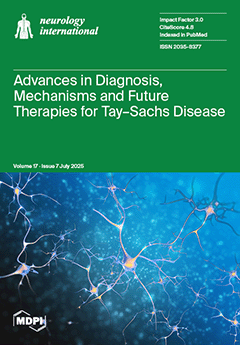Background: Administering intravenous thrombolysis (IVT) in patients with acute ischemic stroke (AIS) on direct oral anticoagulants (DOACs) remains a clinical challenge. Current guidelines restrict IVT within 48 h of DOAC intake unless anticoagulant activity can be confidently excluded. However, reliable medication histories are often unavailable, and conventional coagulation tests inadequately detect DOAC activity. This study evaluated whether viscoelastic point-of-care testing (ClotPro
®) could identify the absence of anticoagulant effect in AIS patients on DOACs, thus enabling IVT administration and potentially improving clinical outcomes. Methods: We conducted a prospective observational cohort study of 40 AIS patients with documented DOAC use, admitted between February 2023 and May 2025. ClotPro
® was performed at admission using the Russell’s viper venom (RVV) assay for factor Xa inhibitors and the ecarin clotting time (ECT) assay for dabigatran. Subtherapeutic anticoagulation was defined as a clotting time (CT) of <100 s for RVV and <180 s for ECT, respectively. Patients identified as being subtherapeutic were assessed for IVT eligibility. To evaluate IVT effects, we performed propensity score-matched bootstrap resampling (1000 iterations), matching patients by age, admission National Institutes of Health Stroke Scale (NIHSS), and pre-stroke modified Rankin Scale (mRS). Primary endpoints were NIHSS-shift (change from admission to 72 h) and mRS-shift (change from pre-stroke mRS to 90-day mRS). Predictors of outcomes were analyzed using multivariate regression models. Results: ClotPro
® identified 15/40 patients (37.5%) as subtherapeutic, all on factor Xa inhibitors. Of these, seven received IVT. In matched analyses, IVT-treated patients showed a numerically greater neurological improvement than untreated patients (mean NIHSS-shift: −2.83 vs. 3.94; mean difference: −6.76, 95% confidence interval [CI]: −24.00 to 7.55;
p = 0.495). Functional outcome by mRS-shift showed only minor differences between groups (2.74 vs. 2.10 mean difference: 0.64; 95% CI: −2.00 to 2.50;
p = 0.510). IVT showed a favorable trend for early neurological recovery (
p = 0.081) but was not independently associated with functional outcome (
p = 0.380). Conclusions: ClotPro
® identified a substantial subset of AIS patients on DOAC therapy without measurable anticoagulant activity, enabling IVT in cases that would otherwise have been excluded based on medication history. These findings support the feasibility of ClotPro
®-guided decision-making in acute stroke care and highlight its potential to improve IVT selection by enabling real-time assessment of coagulation status at the bedside.
Full article






